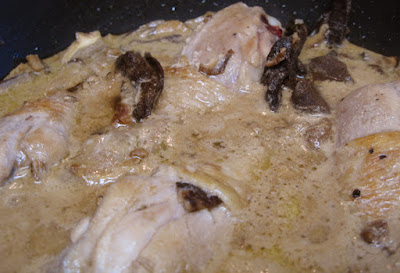The happy problem with French crêpe party is that there is no limitations in terms of the type of fillings you can enjoy, and you end up eating more than everything.
The northwest region of France in Brittany is famous for their crêpes, but nowadays, you see French crêperies everywhere, even in Wellington. And they serve yummy crêpes!
The biggest difference between a French crêpe and an American pancake is their thickness. A French crêpe is so much thinner that you get to enjoy more, with different types of fillings, from savoury to sweet ones.
So, you can imagine that when we hold crêpe parties, there's more fillings than your stomach can hold. It's not a lot of work or pre-cooking, as we use basic ingredients like butter, sugar, nutella, bananas, strawberries, bacon, mushrooms, shredded cheese, walnuts, blue cheese, lemon juice, eggs, almonds, liquor, orange, cinnamon...
One problem with making crêpes is that, they are best enjoyed when they are hot. So if you're making crêpe on your frying pan, it makes serving everyone at the same time difficult. The French (or rather Tefal) have found a happy solution to this problem with the Multi Crêpe Party device. You basically plug it and put on your dining table, and everyone surrounds it like a steamboat and makes their own crêpe together. It makes 6 much smaller crêpes at the same time. It's fun, and useful even for parties of more than 10. Everyone just end up standing around the table, cooking and eating. However, this electronic device may be hard to find outside France, but they are widely available in stores like Carrefour or Darty in France (we actually went to the trouble of carrying one back from France).
Crêpe batter
Serves about six
250g flour
3 eggs
500ml milk
pinch of salt
about 1 teaspoon of melted butter
water
Mix flour and egg. The mixture gets very thick and dry. Add milk slowly until you get a smooth batter. Add butter and salt.
We find that the batter could be thinner, and usually add about half a cup of water and more milk, so that the crêpe spreads thinner.
Chill in fridge for about half an hour.
To cook, spread a thin layer, one at a time, on frying pan or use a multi crêpe party device.
To serve, add fillings, fold into half or quarter, or just simply roll up.
Simple Crêpe Fillings suggestions
Savoury
Bacon: This is always a winner. Fry them until they are crispy. Top with shredded cheese or mix with mushrooms.
Mushrooms: You can stir fry mixed button mushrooms (diced into small cubes) with olive oil, garlic and chopped fresh parsley (seasoned with salt and black pepper). Another alternative is to fry with bacon (and chopped onions), add some fresh cream, season with herbs, salt and black pepper).
Eggs: Beat an egg into the multi crêpe party, you get a perfect round sunny side up. Put it on top of the crêpe and add bacon and cheese if desired.
Blue cheese and Walnut: For the slightly more exotic taste buds. Popular with our crêpe party guests so far.
Sweet
Butter, sugar and cinnamon: My all time favourite! Melt them altogether on the crêpe and eat it while it's hot. Sinfully good.
Sugar with lemon juice: For some tangy punch, squeeze some lemon juice onto sugar.
Banana or strawberries with melted chocolate: Always pair well together.
Banana with milo: A great pair here too
Banana with orange: We tried cooking banana with orange juice/pulp. Something new for a change.
Banana and honey: Classic
Strawberries with sugar: Tried it yesterday and it's good.
Ice-cream: If you're fast to eat before it melts on the hot crêpe.
Liqueur: You can make a Crêpe Suzette by putting sugar and liqueur such as rum on it (with fruits like bananas), and setting it on fire. Sure to capture everyone's attention.
Jam: Or basically, just scour through your pantry for anything that you find suitable. It will ensure a successful crêpe party with a big spread of fillings to satisfy every palate.
note: Crêpes in pictures shown are made this morning with leftover batter from our crêpe party last night, using a normal frying pan.





















